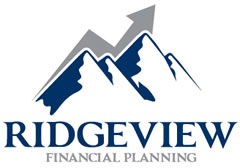Stronger than Expected
In last week’s note I mentioned how many, if not most, investors are in wait-and-see mode when it comes to the new administration’s impact on the economy and markets. I also mentioned how investors generally favor traditional Republican ideals of lower taxes and less regulation. That said, nobody likes uncertainty.
Along these lines, the following is a great summary from JPMorgan on the ongoing reassessment happening in the markets. We’ve discussed this in recent weeks, but it’s helpful to get some confirmation. Investors had been expecting interest rates to drop rapidly but are now revising those assumptions. This impacts bond prices directly and feeds into stock prices, while also percolating throughout the economy. Rates remaining higher for longer would be a net-negative for the economy and would hit homebuyers and people with consumer debt hardest. The WSJ reports that the average 30yr fixed rate mortgage is about 7.4%, higher than referenced below. And the Prime rate, impacting credit card balances for example, is still at 7.75%, not terrible but substantially higher than a few years ago.
From JPMorgan…
In September, the Fed kicked off its cutting cycle because “the balance of risks” had shifted. But subsequent economic data and the election results could be shifting it back. This week’s chart shows both growth and the labor market are tracking stronger than the Fed expected, posing upside risk to inflation.
Core PCE [personal consumption expenditures] has come down since 2022, but progress has stalled over the past few months. Both CPI and PPI rose solidly this month, increasing estimates for October PCE. Moreover, the housing inflation driving CPI is unlikely to alleviate anytime soon. The ~75bp sell-off in the U.S. 10-year since the first cut has pushed mortgage rates from 6.1% to 6.8%, and housing purchase activity remains near its lowest level since 1995.
While [Fed Chair] Powell stated at the November meeting “in the near term, the election will have no effects on our policy decisions,” investors are likely more concerned about the long term. Several of Trump’s top priorities are somewhat inflationary. Immigration restrictions could re-heat the labor market, stoking wage growth, and tariffs could increase prices. This, combined with a potential trade-war supply chain disruption, could reverse recent disinflation progress in goods.
Altogether, risk seems more skewed toward inflation than in September. December revisions to the dot plot [where Fed policymakers chart their economic assumptions] should reflect this, but the Fed will likely stay the cutting course. However, markets are currently only pricing ~70bps of easing by the end of 2025, compared to ~95bps before the election and ~160bps after the September meeting. Investors should be aware future easing could progress slower and end quicker than previously expected.

Elsewhere in the realm of uncertainty, investors are waiting to learn who President-Elect Trump will nominate to be Treasury Secretary. As you can imagine, this cabinet position can have significant impacts on markets, for better or worse, and is probably the most relevant pick for investors to watch. The position is up in the air as I type this morning. The primary concern among market watchers is how willing a new Sec Tres will be to leverage tariffs. As alluded to above, trade wars, spats, and so forth slow trade in an interconnected global economy, so add that to the list of things for investors to worry about.
Ultimately, these unanswered questions stoke short-term volatility as we swing from unbridled optimism to something more guarded. This may be with us for a while as the new administration gets sorted. Remember, though, that markets can seem shaky even as prices are rising. Some have historically referred to this as climbing the wall of worry, while the WSJ over the weekend referred to investors betting on a market melt-up. However you frame it, investors are cautiously optimistic at a minimum and that’s a good thing.
Have questions? Ask us. We can help.
- Created on .



